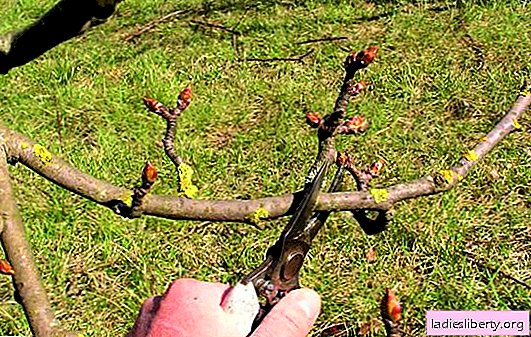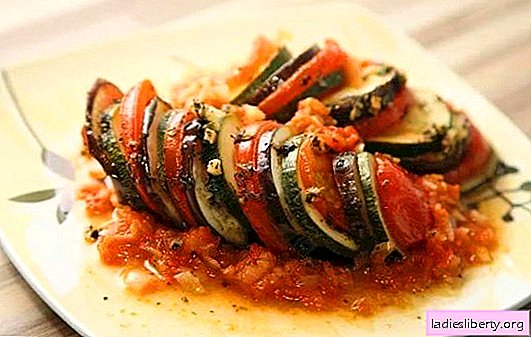
A man dressed with a needle is very beautiful and sexy.
Especially if a stylish tie is tied to a traditional shirt.
Knowing how to tie a tie, it is easy to make the right impression on the girl of dreams or business partners.
How to tie a tie: basic principles
It is not necessary to act on your own: if a girl is already impressed, composes company for morning coffee, and even knows the intricacies of tying up such an important part of a men's wardrobe, a man can safely trust skilled female hands.
Bachelors need to make friends with ties on their own. In any case, one of the main principles of work: always tie a tie exclusively on the neck. No matter how great the temptation is to first make a noose in your hands, and only then put it on your shirt, you cannot give in to it. A beautiful, harmonious knot cannot be made. Yes, and generally not comme il faut.
There are other rules:
• the thin tie end must be half shorter than the thick;
• the length of a tie in the modern world according to classical canons: two centimeters below the belt buckle.
There is nothing worse than a too short or too long tie: such negligence will give an absurd appearance and forever ruin the image.
The word "tie" comes from the German "Halstuch", which means "neckerchief." By the way, fashionable men still use neckerchiefs. This is not difficult: I tied it around my neck, straightened the knot, hid the ends inside the shirt, unbuttoning one button, and the stylish look is ready. You don’t even need to learn! But a tie in the classical sense requires more attention. Will have to work hard to master the basics of the correct design of the site.
How to tie a tie: different options
Men in love with ties. It is pointless to argue: it’s an axiom that does not need to be proved and impossible to hide. Otherwise, where would all these 85 options for tying a banal piece of narrow fabric come from? For centuries, a strong half of humanity has been practicing a useful skill in order to pass it on to descendants with a tired smile on his face and a pleasant sense of accomplishment.
The names of tie knots are a century-old history filled with dramas and fates of famous people. They sound music for connoisseurs of men's fashion. To tell the world how to tie a tie, many books have been written, hundreds of instructions have been created.
The most popular ways:
• simple or quadruple knot (Four-in-hand - four in a hand);
• Windsor node, or "Windsor";
• Half-Windsor node (Half-Windsor);
• American Knot, or Pratt;
• diagonal knot, or Atlantic;
• original site "Onassis";
• complex node "Eldridge";
• triangular node "Hanover";
• Oriental node (other names are Red or Small).
It makes no sense to list all kinds of nodes. Many of them are modifications of the main methods. For example, a double knot is a type of Victoria knot, a diagonal knot was born on the basis of the Kelvin knot, and Kelvin itself is a direct descendant of the Krestovy knot or Oriental.
Each method has its own characteristics. So, Kelvin knot tied with a seam outward and belongs to the so-called wrong nodes.

After the final formation, the seam is completely invisible, since its size completely coincides with the neckline of the shirt collar.
The transverse knot looks very beautiful thanks to a strip of fabric that elegantly divides it in half, creating side “pads”.

This method will be good for informal events, and it also looks fantastic on women.
Unusual way-rosette can make a man simply irresistible. In order to learn how to tie a tie correctly using this method, you will have to train for quite some time. But it's worth it!

Eldridge Node refers to very non-standard ways to tighten the loop on the male neck. It is tied not at five, but at fifteen steps.

Option "Onassis" The amateur of the clown will appreciate.

For a business meeting, such an informal approach to their own image is unlikely to be useful, but what kind of business is the image of that very rich Onassis? But it turned out unusual.
How to tie a tie: sequence of actions
A simple way to properly tie an oblique windsor.
1. Throw a strip of fabric around the neck so that the thin end of the tie hangs on the right by about ten centimeters of the thick end.
2. Between the closed index, middle fingers of the left hand and the thumb, hold the thick end of the tie at chest level and move it clockwise from the top outwards, throwing it over the index and middle fingers.
3. Hold the tie with the index and middle fingers of the right hand so that the middle finger is in a position toward itself, and the index finger is away from itself. In a clockwise motion, form a loop by pulling the fabric up. Combine both loops on your left hand.
4. With your right hand, grab the thin end of the tie and thread it through the loop.
5. Correct the fabric and tighten the tie.
Classic way the correct tie of a tie with which any man is familiar today (Four-in-hand technique) was invented by the British two hundred years ago. Everything is very simple:
• place the fabric with the narrow end to the right, throw the wide part over the narrow crosswise;
• tuck the wide end under the narrow one and throw it over the narrow one again;
• thread into the loop formed, pull it upward;
• push the wide end into the second loop that appears under it, pull it down, while holding the formed knot;
• finally form the knot so that the collar does not hide it. It is very good if a simple quadruple tie is slightly asymmetrical and stylishly sloppy.
For shirts with narrow collars, the American knot is ideal (Pratt). How to tie a tie in this way:
• the fabric is thrown inside out, cross the narrow and wide ends so that the narrow part lies on top of the wide one;
• stretch a wide part of the tie from above into the resulting loop, pull down;
• place the wide part over the narrow one, directing it to the left, then pass it through the loop from the bottom;
• tighten downward.
Learning how to tie a tie is easy. Two or three trial repetitions of any node - and it will turn out by itself.
A very complex but beautiful diagonal knot (or Mosconi knot) difficult to knit even for experienced people. But if you want to attract admiring attention, why not learn?
• Arrange the ends of the product cross-wise so that the wide part is on top and is directed to the left.
• Turn it under the narrow part and pull it to the right.
• Wrap over the narrow part again and pull to the right again.
• Throw the wide end through the upper left “strap” (neck loop) from top to bottom, pull to the left.
• Pass through the formed loop and pull down.
• Gently straighten the assembly.
American David Mosconi, by the way, co-authored with Ricardo Villarosa wrote the "Book of ties." Buddies was a collector of this item of men's wardrobe.
How to tie a tie: tips and tricks
Making a tie knot requires not only care, but also caution in handling the fabric. Forming a knot, you can not pull, roughly pull the ends.
The only knot where careless folds are allowed is Windsor. All other options should be ideal in terms of smoothness: no wrinkles, irregularities.
The ends of the product must match or the upper wide end hides the lower narrow part of the tie. If a narrow edge peeks out, the whole structure needs to be bandaged.
The fabric of the product must be selected so that it harmonizes with the shirt. For example, a compact double knot is good when knitted from a soft fabric. He looks great on shirts with a long collar.
Moments such as height, type of face and figure of a man are also important. So, thin men look fine on thin men, on large men - large, solid.
Thick, thick fabric ties are best knitted with simple knots. Tall men will look chic with them. On low representatives of the stronger sex, the “Hanover” knot (one of the options for the Windsor tie) looks great.
Chubby men should avoid the Oriental miniature knot made of silk fabric so as not to emphasize the oval even more.
The chic diagonal knot is good in itself, so you need a plain fabric without a pattern or texture. Otherwise, the beauty of the node will not be noticeable.
It is important not only to tie a tie correctly, but also to untie it correctly. Pulling at the narrow end, you can’t pull: you can quickly and irrevocably damage the fibers, which already get in tight twisting. It is not enough just to loosen the knot so as not to mess with the formation of a new one next time. The tie should be completely unfastened and stored in an extended condition.











